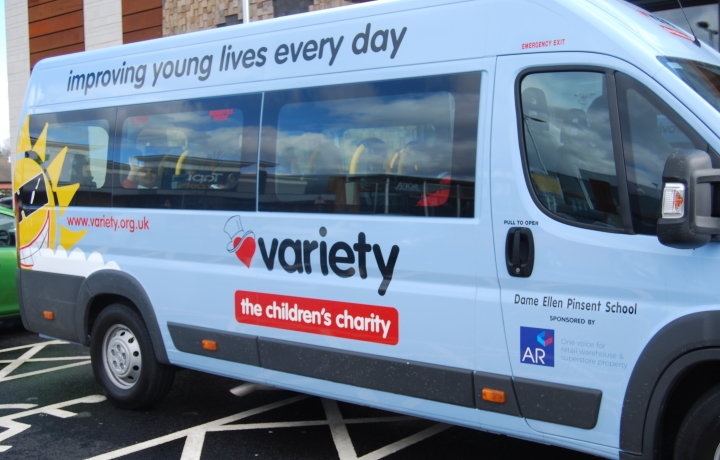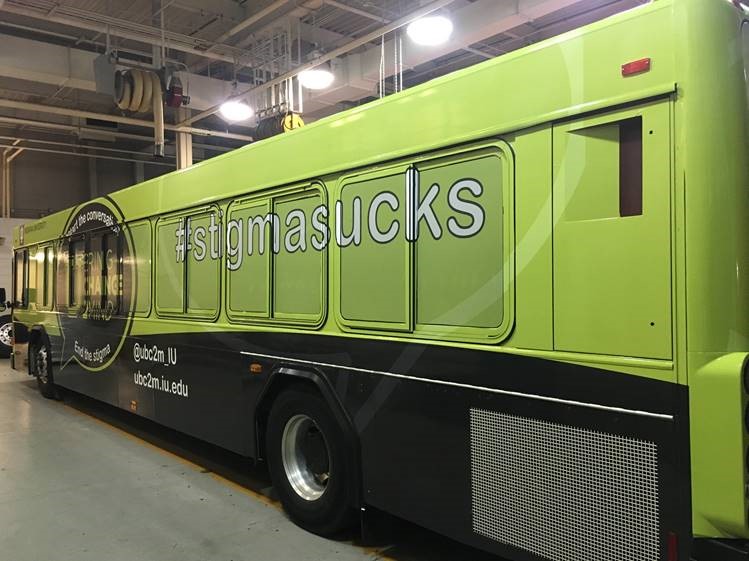This project forms part of Time to Connect.
I spent time recently with a service that intends to purchase a new minibus with a tail lift for its people who use a wheelchair. Funds had been raised by the hard work and sacrifice of relatives and friends, and the service is keen to thank them for their dedication. The traditional way to do this is to paint the new vehicle with the name of the donor and the logo of the charity. This page suggests that there may be unintended negative consequences of this traditional approach, that deliver the exact opposite of what the generous and well-meaning donors meant to happen. Click here to see a one-minute video summarising the issue.
Maybe the service could check its names and logos and see if there is a need to replace traditional imagery with really positive messages. As the Commission on the Voluntary Sector and Ageing put it:
‘We must reject the insidious use of language and images that suggest all older people are vulnerable and needy.’
Commission for the Voluntary Sector and Ageing (2015) Decision time page 5
Perhaps disabled passengers should be ‘out and proud’ rather than hiding or trying to pass as nondisabled. Would a labelled vehicle avoid car park charges or road taxes and would it be allowed to travel in restricted lanes on the highway? Would the label prompt the public or traffic wardens to be more patient than they might be otherwise, leaving more space in parking areas and allowing passengers longer to get off the bus?
Fifty years ago, Goffman wrote about how institutions and systems can accidentally or deliberately spoil the person’s identity; Edgerton wrote about the impact of stigma and then Wolfensberger explained how labelling can amplify negative perceptions.
Some people share a characteristic that is negatively valued in our unjust society, such as disability. Simply pointing the people out as a group provides an opportunity for a process to begin that starts with recognition, goes through the stages of devaluing and labelling and gets to the point where power is exercised against the group. This is discrimination at work.
From this perspective, passengers are devalued, since they are not enjoying the social status that attaches to being a driver. Riding in a minibus is devalued in comparison to driving an expensive car. High status executives drive unmarked cars while their subordinates are obliged to travel in branded lorries, vans and cars. Sometimes the text of the branding reminds passengers that they should be grateful as they are the recipients of charity; and sometimes it presses onlookers to feel pity. Even if the branding is positive, the onlooker may carry their own internal negative assocations and imagery, and marking the vehicle will remind the observor of these associations and trigger anxiety or disdain. Sadly, in our unequal society, appearing visibly disabled adds yet one more blow to this bombardment.
As the students of intersectionality show, these individual devaluing processes do not add up to create the total impact – they multiply. As a result, the passengers concerned are in real danger of becoming the subject in what Adichie dubs a ‘single story‘, or worse, they are seen as the victims of tragedy or objectified. Once such messages and stories are conveyed, it is hard to see the person as strong, resourceful, and creative. Such processes affect the public, but they can also be internalised by the person themselves who then adopts the identity of a dependent victim. A few take up the fight and become warriors for justice by reclaiming the right to define themselves, challenge assumptions and reframe the experience of disability, but most just want a fair chance to get on with living an ordinary life like everyone else. The slogan on the minibus removes individual choice and control and brands everyone, like it or not.
There is also a dynamic relationship between people and things, and stigma can pass from one to the other and back again (for a discussion of the interaction between disability, stigma and things, see here). This means that a rejected social group may damage the status of a neutral item, such as a minibus, and the low value then sticks to the object and affects new passengers. This is particularly apparent when the only examples of a particular type of minibus are found in the disability community, and other groups are then reluctant to ride on the vehicle for fear of acquiring the unwanted label.
These are awkward truths, and it is distressing for kindly donors and passionate staff to acknowledge the extent to which stigma and discrimination shape the experiences of disabled people in the community. These are powerful forces in society, and health and care services must be smart about these matters. Most progress will be made in combating stigma when donors receive a sincere letter of thanks written on paper instead of on the side of the minibus.
When staff are out in public working one-to-one with the person they support, they should be ‘almost invisible’ (see here). The same principle that applies to individual work also applies to coachpainting. So here’s some examples of separating the issues out and thinking about them separately:
- In Scotland, a charity did a deal with the people who donated the vehicle. They staged a press release with pictures of the vehicle being donated (with an agreement to not use any branding on the bus) and a story that included quotes from people who would use it. Disabled people told their own positive stories of how the bus would help them to contribute to community life, and why it was important to them to leave off the logos.
- In Ireland, one charity took this whole analysis seriously, abandoned minibuses and supported 70 of the people they worked for to obtain their own car, drive it themselves if they could, fill it with fuel and pay the cashier themselves.
- At Indiana University, a research project investigated whether an intervention designed to combat stigma could change attitudes across the whole campus. They ‘wrapped’ a bus with a poster about mental health and it became a major talking point amongst students. We notice that this project painted a public bus that was used by everyone, rather than marking out a bus that was used as segregated transport. Read about the project here.
- In a low-income country, the local lorry driver asked for his new, donated vehicle to be painted with a logo by the funding body. This would show that he was not wealthy enough to purchase his own vehicle, but was simply lucky to be engaged as a driver. Having a job did give him standing and comparative wealth, with attendant responsibilities towards those less fortunate than himself, but he had not become rich enough to meet everyone’s financial need.
You can see a broader discussion of transport and particularly informal lift-sharing here.



Recent Comments